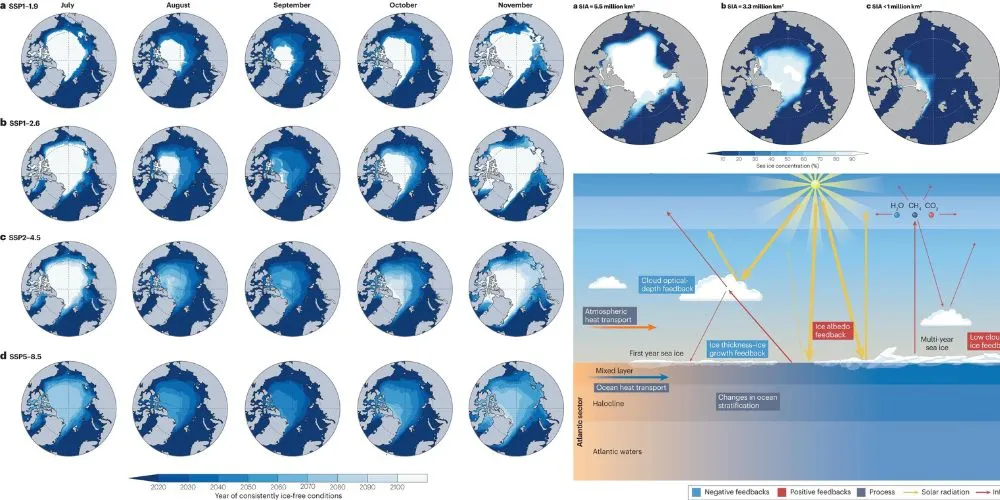Key Points:
- The Arctic could experience its first ice-free day ten years earlier than previous projections; mid-century projections indicate an entire month.
- The study focuses on the daily ice coverage threshold rather than monthly averages.
- Greenhouse gas emissions are identified as the main contributors. Emissions management is crucial to determining the frequency of ice-free conditions.
- Arctic sea ice can recover quickly if atmospheric conditions cool down, but efforts to reduce emissions remain crucial.
A recent study published in the Nature Reviews Earth & Environment journal suggests that the Arctic might witness its first ice-free day over a decade earlier than previous projections. The findings indicate a potential shift in the region’s sea ice dynamics, with an entire month without floating ice during September expected by mid-century.
Led by Alexandra Jahn, associate professor of atmospheric and oceanic sciences at CU Boulder’s Institute of Arctic and Alpine Research, the research challenges earlier estimates that focused on the timing of the Arctic being ice-free for a month or more. The study indicates a consistent trend across various emission scenarios, raising concerns about the accelerated pace of climate change impacts in the region.
In this context, “ice-free” doesn’t imply a complete absence of ice but is defined as when the Arctic Ocean has less than 1 million square kilometers (386,000 square miles) of ice. This threshold represents less than 20% of the region’s minimum ice cover in the 1980s. Significant ecological and environmental impacts are anticipated even with this small amount of ice.
The projections suggest that, under a high-emissions scenario, the Arctic could become consistently ice-free, even during some winter months, by the end of the century. The ice-free Arctic threatens various Arctic species, including seals and polar bears, and potential risks to coastal communities due to increased ocean wave impacts.
The study emphasizes the role of greenhouse gas emissions as the primary driver of sea ice loss. The decrease in snow and ice cover amplifies the absorption of sunlight by the ocean, accelerating ice melt and overall warming in the Arctic. Sea ice decline is expected to have cascading effects on Arctic ecosystems and weather patterns.
While the certainty of an ice-free Arctic is acknowledged, Jahn highlights the importance of managing emissions to determine the frequency of such conditions. The study notes that the Arctic might be ice-free only during late summer and early fall under an intermediate emissions scenario. However, under the highest emissions scenario, the region could experience ice-free conditions for up to nine months by the late 21st century.
Despite the concerning projections, the study offers a glimmer of hope, stating that Arctic sea ice is resilient and can quickly return if atmospheric conditions cool down. The researchers emphasize the need for concerted efforts to mitigate emissions and limit the prolonged impacts of ice-free conditions on the Arctic environment.










